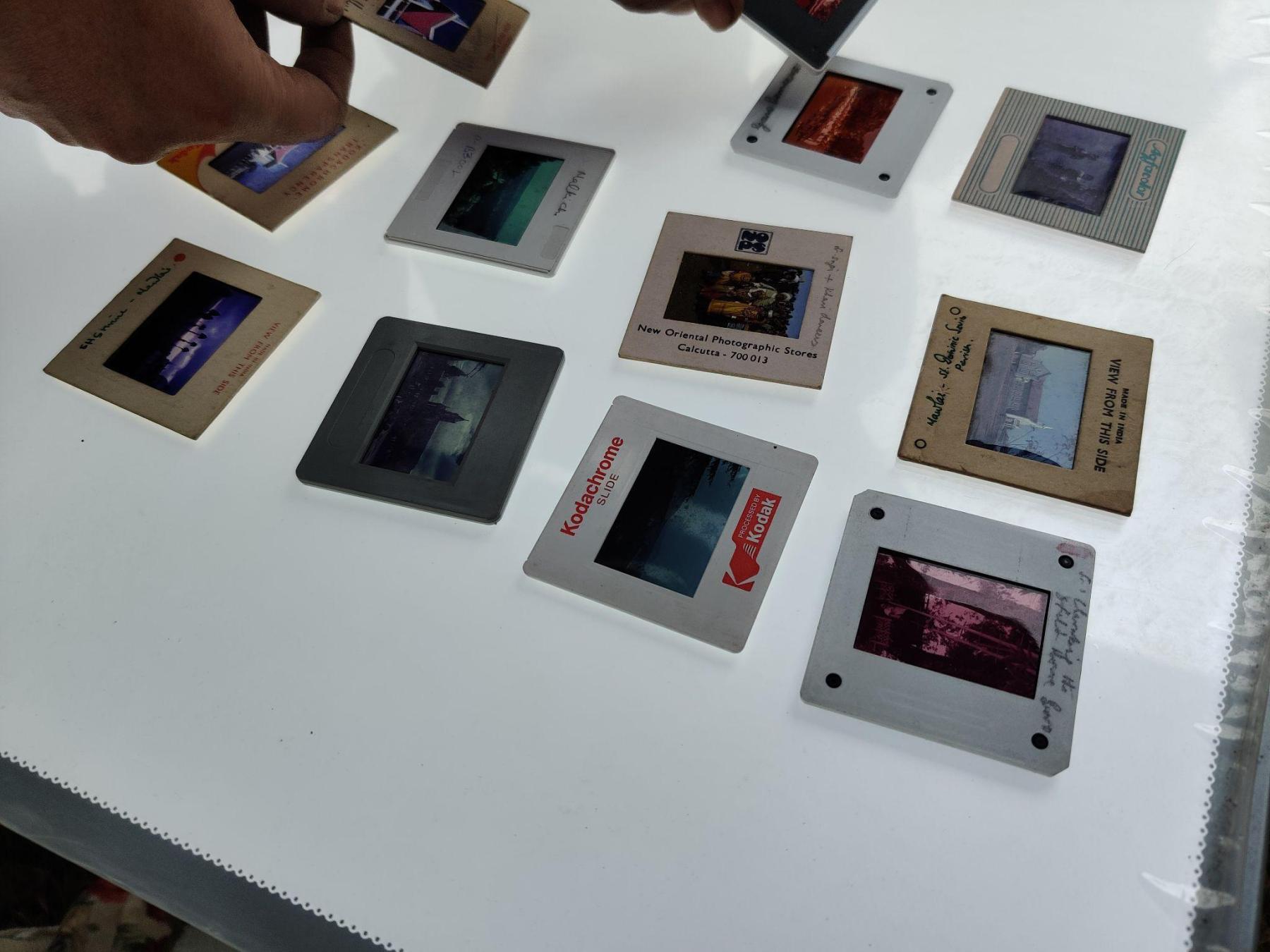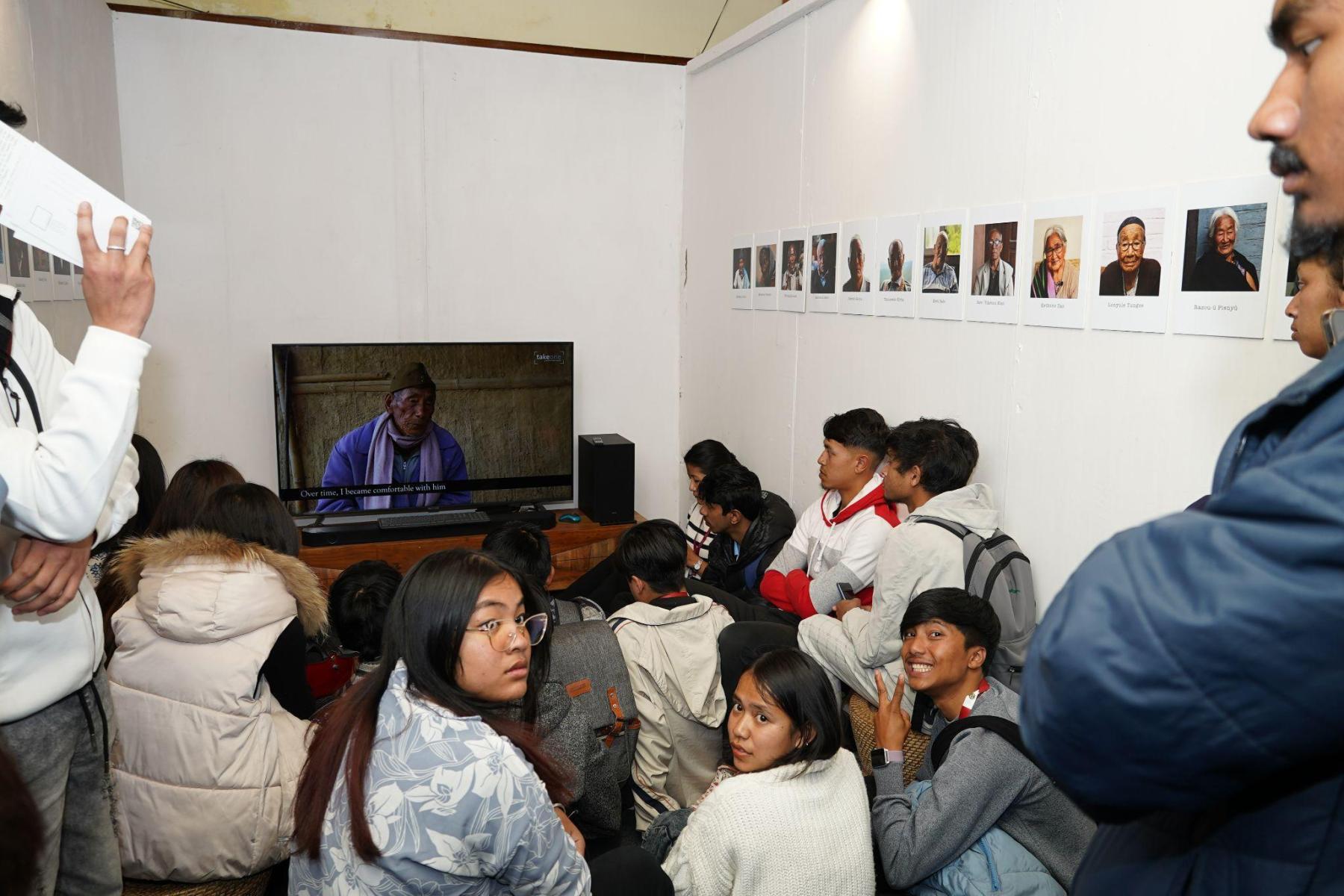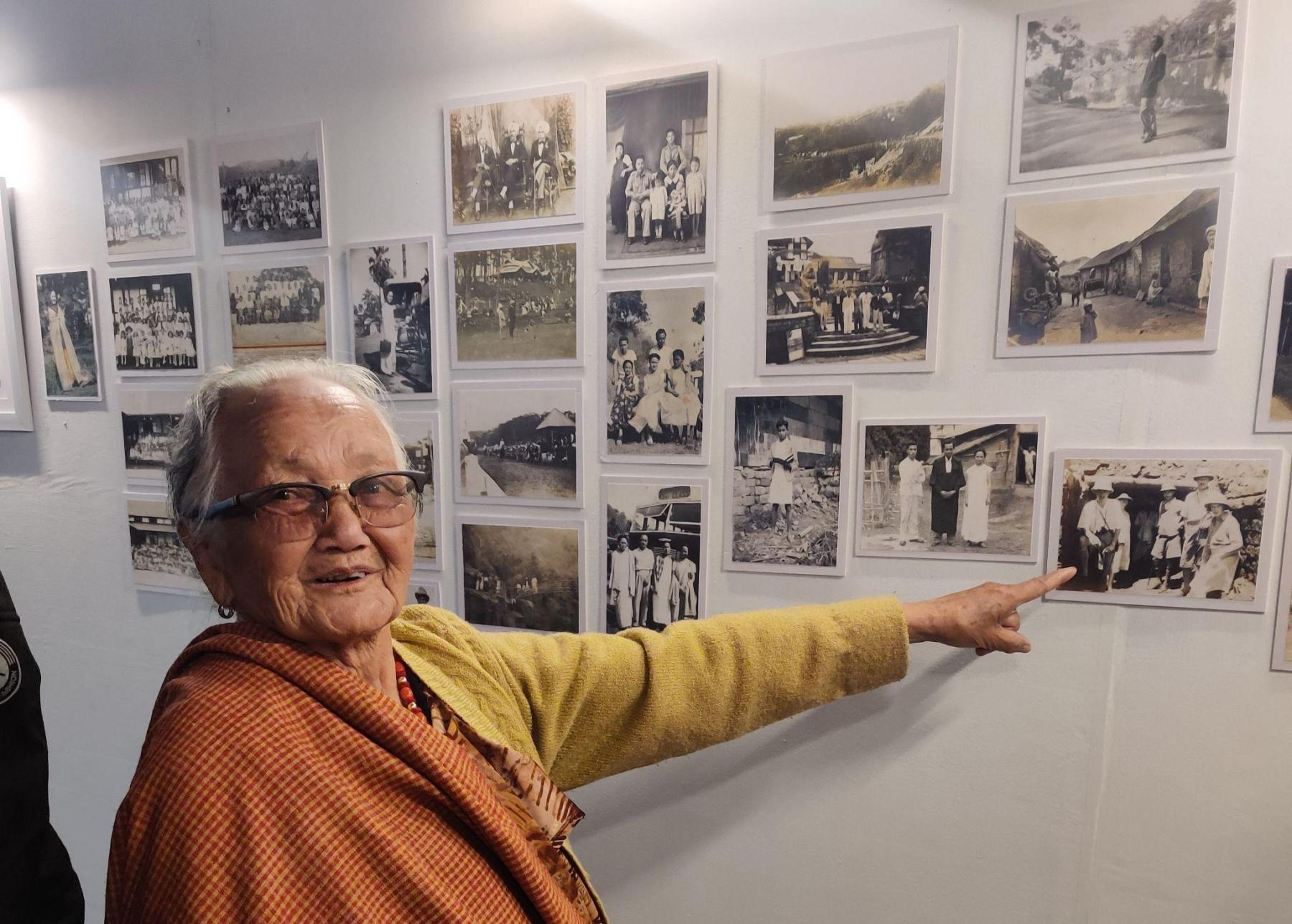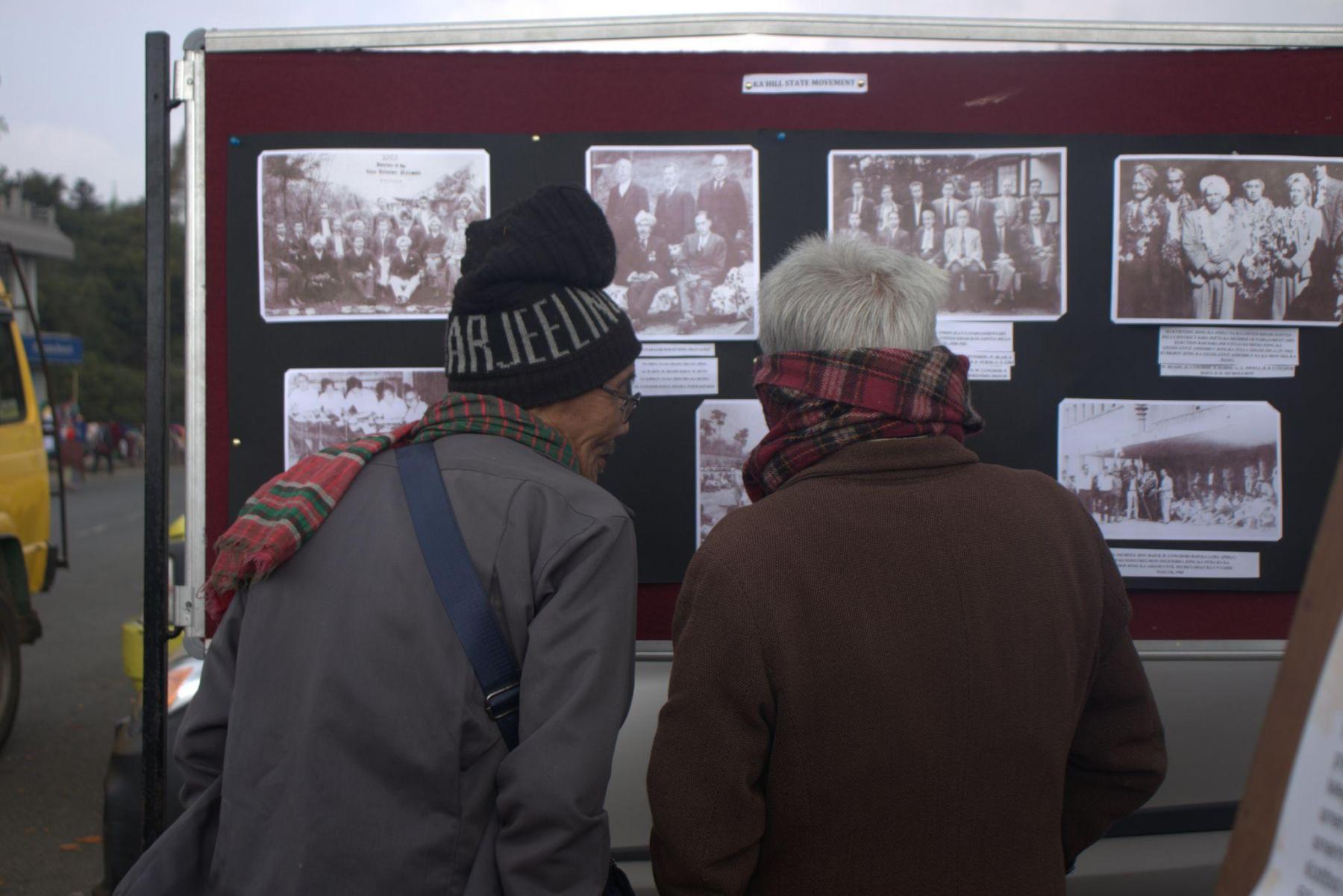Memory-Keeping with Archives: In Conversation with D. Junisha Khongwir
The Northeast India AV Archive is a public audiovisual archive established in 2019 that hosts a vast repository of archival photographs, newsreels, film and television broadcasts, oral history and newspapers. What began as a humble attempt to document untold stories from the northeastern region of India at the Department of Mass Media, St. Anthony’s College in Shillong, Meghalaya, has since evolved into a major initiative with the support of the Sasakawa Peace Foundation, Japan. In this edited interview, D. Junisha Khongwir, curator and board member at the NE India AV Archive, delves into the foundational ideas of the archive, the unique sociocultural history of the Northeast Indian communities, and the potential for collective collaborations in sustaining stories from the region through aural and visual cues.

Archival images from the “Road to 50” exhibition, which showcased photographs of key figures in the Hill State Movement, along with photographs of people and the natural landscape of the Garo, Khasi, and Jaintia Hills during the colonial period (Jowai, Meghalaya, 2021).
Ankita Ghosh (AG): The Northeast India AV Archive has been deeply involved in the collection and conservation of audiovisual material from different communities in the region. I wanted to begin by asking you to share a little bit about the initial ideas that gave birth to the Archive.
D Junisha Khongwir (DJK): The Archive is based at St. Anthony's College, under the Mass Media Department. Over the years, the department has collected a lot of material, including short films, advertisements and features. Since we already had this repository of audiovisual material, we wanted to formalise our work in 2019 by assembling an in-house archive. Around the same time, we also received interest from the Sasakawa Peace Foundation. We slowly began working on pilot projects, which have shaped our practice over time. For five years now, our approach has been wide-ranging—from cataloguing and preserving existing archival material to organising several workshops and building collaborations with other like-minded bodies in the region. We are deeply committed to documenting the stories of people in Northeast India as a primary affair. Given that most of our stories have been passed down predominantly via oral traditions, the NE India AV Archive looks at the region’s history through the ways in which people remember important events over decades. When we started the oral history project in 2020, our first iteration involved tracing the history of the Hill State movement of Meghalaya because we realised we had very little knowledge of how our state came into being. Even though there are books, they are always from an administrative point of view. We went about collecting material in the form of family albums. And surprisingly, we could come up with a complete timeline with the help of the public. That is when we also made the archive public—to open it up to people to view and add to the collection. It was a very conscious decision to put the archive out there for the public. In our experience, this has allowed us to grow the collection through people’s participation. In that sense, it is more like a community archive that we continue to build.
A closeup of the NE Lightbox project at Legacy Threads (Shillong, March 2024).
AG: As someone who is involved in the day-to-day aspects of managing the Archive, could you please tell us about how it impacts your own creative practice?
DJK: It is quite something because once one sits with an archive, when they start looking at it, it also reflects on the kind of work that they have been doing. For me, it really transformed my photographic practice. After looking at all the images and learning how audiences interact with the material, the experience really made me think critically about my work. As media practitioners, we tend to make photographs or collect material over time, which perhaps never goes back to the public. It ends up contained within our own system. The NE India AV Archive’s model of giving back what is of and from the public has shaped the way I look at my own belongingness to a place, the idea of a homeland, or the idea of home. It has also made me think deeply about collaborative projects, which are so much more meaningful in their ability to tell a story collectively. Many of the projects that I have taken up have been rooted in this understanding—from the collection of stories from the Mizo community of Shillong in the book Stories from the Valley, where I collaborated with Karen L. Donoghue, to most of the exhibitions we have done since the archive first came into being.

Young audiences engage with the Battle of Kohima project by Take One Production House, Nagaland, at the recently concluded Legacy Threads (Shillong, March 2024).
AG: What inspires your curatorial approach when it comes to the archive or your projects, like the recently concluded exhibition Legacy Threads?
DJK: When we began formalising the archive, I would digitise a lot of the 35mm and 120mm photographs. I spent really long hours just looking at the material. The practice of sitting and digitising the material has really impacted how I thought of showcasing the collection—why we need certain work to be out there in the public, and why we need to curate it in a particular manner. We are very mindful of what material would allow for a greater degree of interaction with the public. The first exhibition that we did was in Pynursla, a busy marketplace in one of the villages in Meghalaya. One of our contributors to the archive had shared a lot of material that he had chanced upon, and he wanted to see what we could do with it. When we cleaned and digitised them, we found that they belonged to a particular area. Rather than try to put the pieces together on our own, we put them out in the open, and the public helped us curate the material—that is how the exhibition came together. From there on, we went to different districts of Meghalaya and started putting out material related to specific districts based on the landscape and the people. That is how we have put many of the archival photographic collections together. So, it is not just about curating; rather, it is an act of allowing things to come together by putting out the material for people to curate.
With Legacy Threads, we were interested in looking at family photo collections and community archives from across the region. We often stumble upon a lot of stories from senior citizens. Conversations with them spiral from one topic to another—political history, the rivers and the hills, how things have changed over time, etc. We wanted this exhibition to be a jumping-off point for intergenerational dialogue through the intimate lens of family photographs and community archives. It was also an opportunity for us to bring together several of our collaborators in the region who work towards spotlighting the interconnectedness of personal histories and narratives within the larger cultural landscape of Northeast India. The participants included Ishi Place, Northeast Lightbox and Tahireh Lal, The Confluence Collective, Highland Group-This is Lamka, TakeOne Production House and The Lepcha Clan stories facilitated by Nar Bahadur Bhandari Government College, Sikkim, alongside works and collections displayed by the Archive.

Kong Pearlymon, one of the contributors to the Archive’s collection, points to one of her photographs at the second edition of the Ki Jingkynmaw, Gisik-Ra-Ani, Kynmo Tympang exhibition (Shillong, January 2023).
AG: Would you like to elaborate on how the Archive collaborates with other organisations in the region?
DJK: As the Archive is presently situated in Shillong, we wanted to see how material could be made accessible in other parts of the Northeast. Currently, we work with three organisations that have a nodal office in the region, which allows access to material within the archive. While some of the archival material can be accessed online, most of it cannot be made available digitally because of copyright issues. What one can do, instead, is write to the archive or go to the nodal office, wherever it is in the region, and directly get access from the office. Apart from this, we also have collaborators who carry out their individual oral history projects—collecting any kind of material that they feel is most urgent for their community.
AG: In your experience, how do you see the archive being practically used by the people in the region? Can you share some examples that have stayed with you?
DJK: With the NE India AV Archive, we are very cognizant of the fact that we might not be able to do everything, but we try to take small steps towards change. Therefore, we allow ourselves to record and document, and we do not wait for someone else to tell our story. While there is a lot documented about northeastern India, accessing such material is often very difficult. As researchers, there is also a lack of access to varied material, which hampers endeavours in academia. For example, there is no written format for the dialect that I speak in. And one faces a lack of material when wanting to know more about it. We wanted to ease this process. As people coming from different backgrounds, our experience has led us to work towards an archive that is user-friendly and open to the idea of sharing.
A young audience member engaging with the Legacy Threads exhibition (Shillong, March 2024).
AG: Would you like to share more about your experience with the ways in which the community shapes the archive?
DJK: At the NE India AV Archive, we have realised how much people in the Northeast have been seen as “subjects.” In our work, we want to value and respect people. It is important that people see themselves in a photograph or in a film and know how they have been portrayed through documents and photographs. We make sure that the work our contributors bring to the table also goes back to them. It is community-based, and what the community gives us, it should also get back.
In documenting people and practices, there is a tendency amongst many to forget how people should be respected and valued for their time and their stories. We try to sensitise our contributors about this specifically. For material that comes to us at the archive, we make sure we know the stories behind each document; we collect as much information as we can. When we put these out for exhibitions, it is always with consent. Everyone is equally involved in the work we put out—our contributors are our chief guests at exhibitions. They are the ones who take audiences around the exhibition, tell their own stories and experience first-hand the reactions of viewers.

Audiences interact with the display of the archival collection at Ka Sngi Dur, one of the Archive's first exhibitions, which was held in a busy marketplace in the village of Pynursla (Pynursla, Meghalaya, January 2021).
In case you missed it, visit Ankita Ghosh’s curated album from the Legacy Threads exhibition.
To learn more about the work of such archives, read Veeranganakumari Solanki's essay on The Confluence Collective and Ankan Kazi's reflections on a panel organised by Asia Art Archive titled Archives as a Site of Collective Meaning-Making, which featured the Northeast Lightbox.
All images courtesy of D. Junisha Khongwir, the NE India AV Archive and respective artists/contributors at the Archive.




